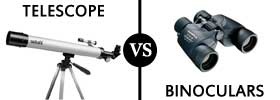Difference between Dynamic Microphone and Condenser Microphones
Key difference: The condenser microphone is a type of microphone that runs on a capacitor. A capacitor is an electronic device that stores energy in the form of an electrostatic field. A capacitor was originally called a condenser. Like all microphones, a condenser microphone converts acoustical energy into electrical energy, but in order to do this, it requires power from a battery or external source. Dynamic microphones are more versatile and simple than condenser microphones. A dynamic microphone works via electromagnetic induction and hence has less moving parts than a condenser microphone.
 A microphone is a device used to record sound; essentially it converts sound into an electrical signal. Hence, it is as acoustic-to-electric transducer or sensor. There are two main types of microphones, dynamic and condenser. There are other types, but these are the most commonly used microphones in today’s applications.
A microphone is a device used to record sound; essentially it converts sound into an electrical signal. Hence, it is as acoustic-to-electric transducer or sensor. There are two main types of microphones, dynamic and condenser. There are other types, but these are the most commonly used microphones in today’s applications.
The condenser microphone is a type of microphone that runs on a capacitor. It is also called a capacitor microphone or electrostatic microphone. A capacitor is an electronic device that stores energy in the form of an electrostatic field. A capacitor was originally called a condenser. Like all microphones, a condenser microphone converts acoustical energy into electrical energy, but in order to do this, it requires power from a battery or external source.
Dynamic microphones are more versatile and simple than condenser microphones. A dynamic microphone works via electromagnetic induction and hence has less moving parts than a condenser microphone. This is similar to the same dynamic principle as a loudspeaker, only reversed.
Dynamic microphones are robust and unlike condenser microphones are resistant to moisture. They are also relatively sturdy and resilient to rough handling. They are also better suited to handling high volume levels, such as from certain musical instruments or amplifiers. This is mainly due to the fact that they do not have an internal amplifier and do not require batteries or external power. All this as well as their potentially high gain before feedback, makes dynamic microphones ideal for on-stage use.
However, as condenser microphones have an external power source, they have a stronger audio signal than from a dynamic. Condenser microphones are also more sensitive and responsive than dynamics. This makes them well-suited to capturing subtle nuances in a sound. Hence, they are often used in recording studios. Still, this sensitivity also makes them more prone to distort, so they are not really ideal for high-volume work.
 Furthermore, condensers microphones have a flat frequency response for particular applications. Dynamic microphones, on the other have tailored frequency responses for particular applications. Also, dynamic microphones utilizing neodymium magnets as part of their electromagnetic induction can be made smaller, with more linear frequency response and a higher output level. This is mainly because neodymium magnets are more powerful than conventional magnets.
Furthermore, condensers microphones have a flat frequency response for particular applications. Dynamic microphones, on the other have tailored frequency responses for particular applications. Also, dynamic microphones utilizing neodymium magnets as part of their electromagnetic induction can be made smaller, with more linear frequency response and a higher output level. This is mainly because neodymium magnets are more powerful than conventional magnets.
Dynamic microphones are less technically complex than condenser microphones, so they also tend to be less expensive. Due to this and other previously stated differences both dynamic microphones and condenser microphones are better suited to specific tasks than the other.
Condenser microphones are often used for sound recording, where each type of condenser microphones and their application is specific to each type of instrument. Dynamic microphones are sometimes also used for recording, but in collaboration with condenser microphones and they are often used for instruments with fairly flat responses. They are also often used for live performances, as they are portable and inexpensive. High-end expensive condenser microphones are usually used for vocals, guitar amps, orchestras, and such.
Condenser microphones are also used in telephone transmitters, inexpensive karaoke microphones and other similar applications. They are also quite popularly used in laboratory and recording studio applications.
Image Courtesy: gadgets-reviews.com, jiscdigitalmedia.ac.uk









Add new comment